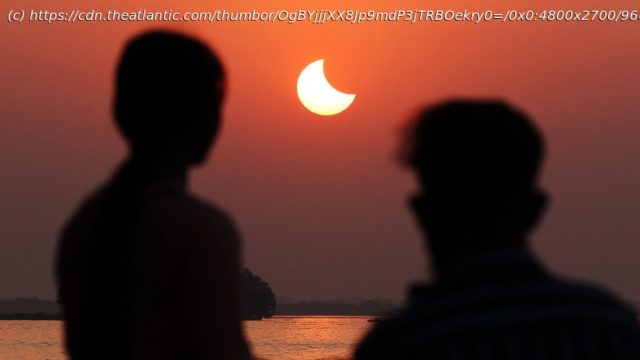To be in the path of totality during a solar eclipse is to experience unadulterated communion with the cosmos.
Like migratory birds guided by the stars, hundreds of thousands of Americans have flocked in the direction of today’s total solar eclipse. They have settled within a narrow strip of Earth where the moon will blot out the sun almost completely. For a few precious minutes, if the clouds don’t interfere, eclipse watchers will experience the surreality of being held by the shadow of the moon. The sky will suddenly be cast in twilight, the sun appearing as a radiant, pearl-white ring. Then the light will wobble, shifting to a shimmery gold, and the sun will burst through, reclaiming its place in the sky.
Humans are privy to all kinds of space wonders these days, thanks to Mars rovers, Jupiter orbiters, and giant space-dwelling telescopes. We can pull up Hubble’s famous deep field at any moment and see, on a single screen, several thousands of galaxies. But these captured marvels have been reassembled for the sake of our senses. Electromagnetic radiation is converted into visible light, strings of zeros and ones into meaningful information. The sights and sounds are filtered through the government agencies, space companies, and academic institutions that package them for public release.
But to be in the path of totality during an eclipse is to experience the cosmos in a truly rare way. We can remove our eclipse glasses and stare at our star. We can experience unadulterated communion with the universe.
The past several years have given us an absolute plethora of cosmic awe. Each time NASA releases a new picture from the James Webb Space Telescope, which is more powerful than Hubble, we meet a luminous, freshly ignited star; shimmery interstellar clouds; sparkling, ancient galaxies as they were billions of years ago, close to the Big Bang. These images are astonishing. They are real. They also require some human tinkering.
The Webb telescope observes the universe in infrared, so scientists must fill its images in with color that’s detectable by the human eye. Because we perceive the longest wavelengths of visible light as red, longer wavelengths of infrared light are also made red. The shortest wavelengths of visible light look violet to us, so the shortest infrared wavelengths are rendered violet.






